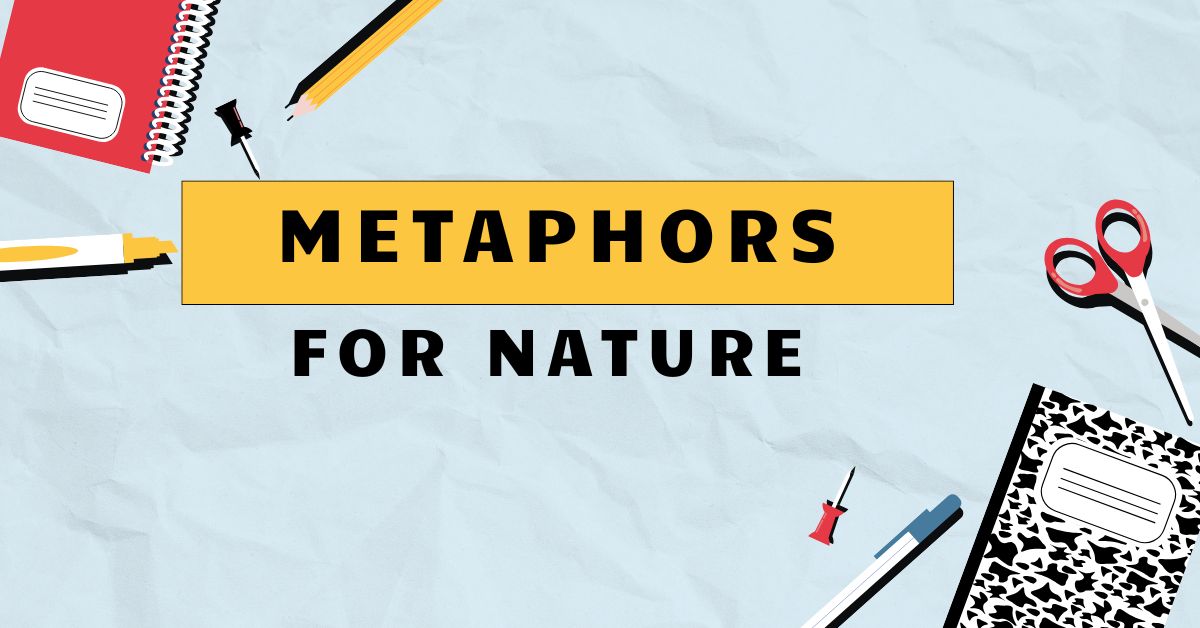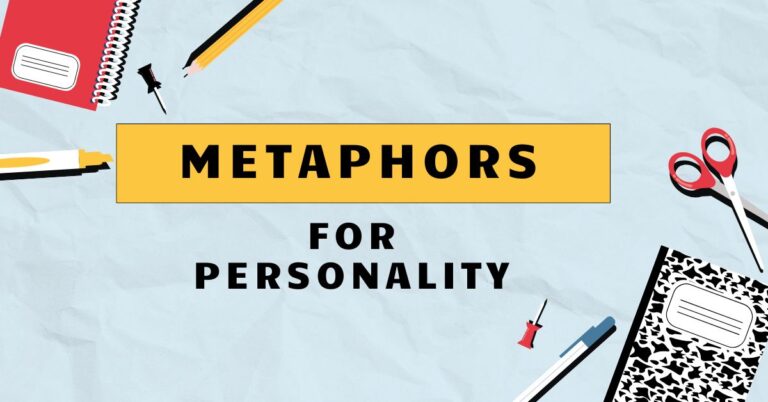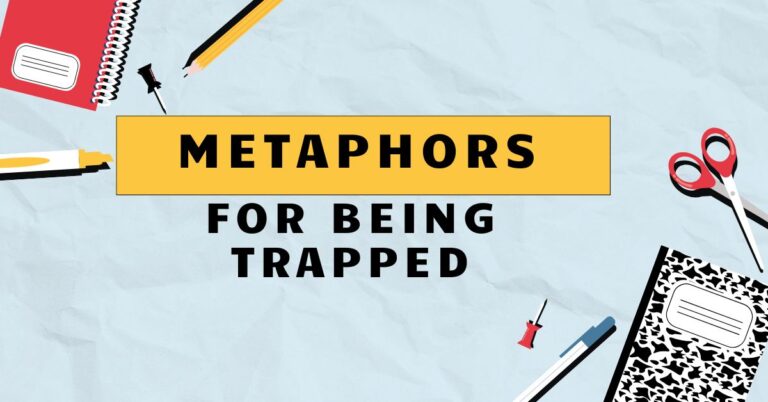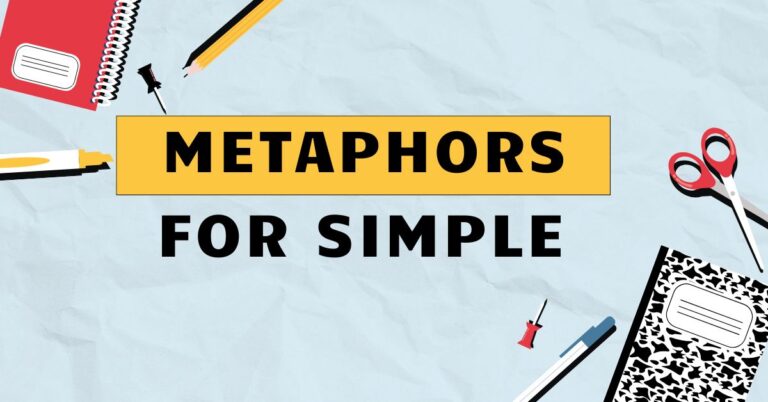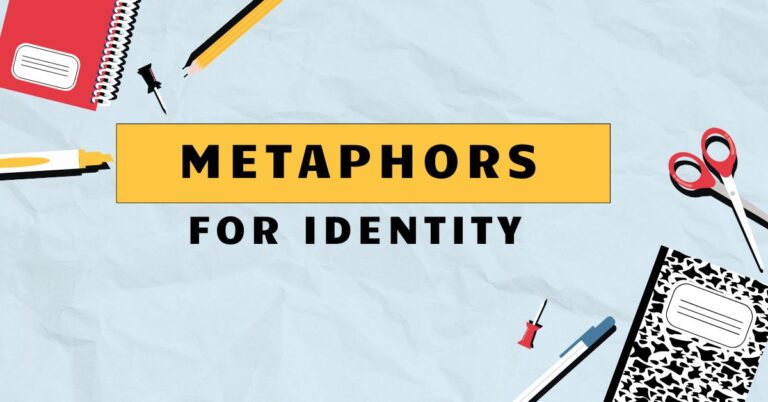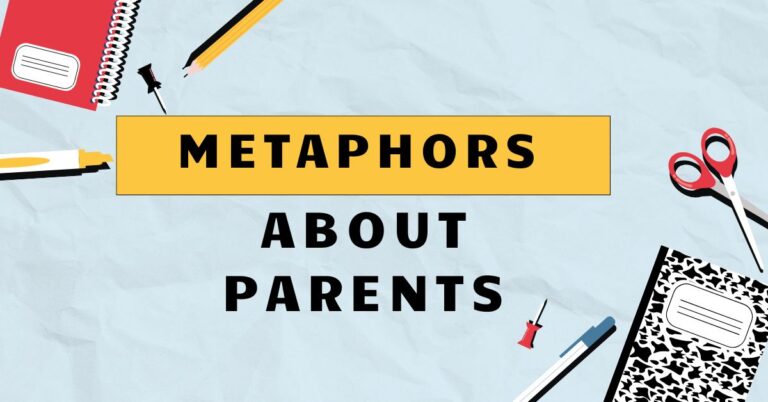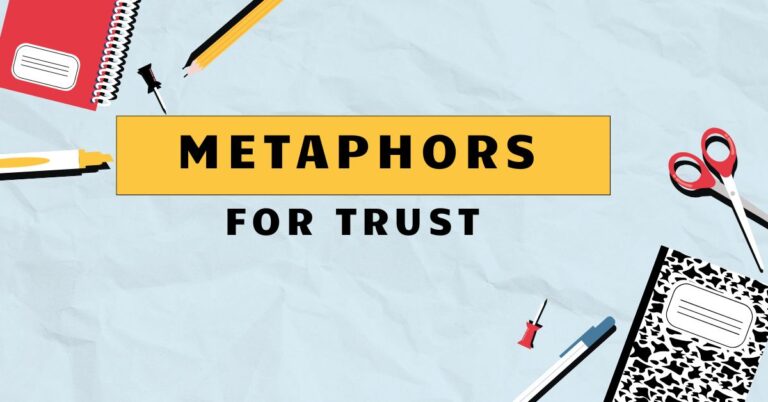41 Nature’s Echoes: Mastering Metaphors in English Grammar
Metaphors are powerful tools that enrich our language and understanding by drawing comparisons between unrelated things. When applied to nature, metaphors can evoke vivid imagery, deepen our appreciation, and communicate complex ideas in a concise and memorable way.
Understanding how metaphors function within English grammar is crucial for both effective communication and literary analysis. This article provides a comprehensive guide to metaphors for nature, covering their definition, structure, types, usage rules, common mistakes, and practical exercises.
Whether you’re an English language learner, a student of literature, or simply a nature enthusiast, this guide will enhance your ability to recognize, interpret, and create compelling metaphors.
Table of Contents
- Introduction
- Definition of Metaphor
- Structural Breakdown of Metaphors
- Types of Metaphors
- Examples of Metaphors for Nature
- Usage Rules for Metaphors
- Common Mistakes with Metaphors
- Practice Exercises
- Advanced Topics in Metaphorical Analysis
- Frequently Asked Questions
- Conclusion
Definition of Metaphor
A metaphor is a figure of speech that directly compares two unlike things without using “like” or “as.” It asserts that one thing *is* another, creating a connection that reveals a deeper similarity or shared quality. This comparison is not literal but figurative, designed to evoke imagery, emotion, or a new understanding.
Metaphors are essential for adding depth and color to language, making complex ideas more accessible and memorable.
In the context of nature, metaphors allow us to see natural elements and phenomena in a new light, often attributing human characteristics, emotions, or abstract concepts to the natural world. This enhances our appreciation and understanding of nature’s beauty and power.
For example, saying “The river is a snake winding through the valley” doesn’t mean the river literally *is* a snake, but it highlights the river’s sinuous shape and movement.
Metaphors serve multiple functions in language. They cansimplify complex conceptsby relating them to something familiar.
They canevoke emotionsby using vivid imagery and associations. And they canadd aesthetic appealto writing and speech, making it more engaging and memorable.
Understanding metaphors is crucial for interpreting literature, poetry, and everyday language.
Structural Breakdown of Metaphors
A metaphor typically consists of two main elements: thetenorand thevehicle. The tenor is the subject being described, while the vehicle is the object or concept used to describe the tenor.
The relationship between the tenor and the vehicle creates the metaphorical meaning.
Consider the metaphor “The sun is a golden coin.” In this case, the tenor is “the sun,” and the vehicle is “a golden coin.” The metaphor suggests that the sun, like a golden coin, is bright, valuable, and round. The shared qualities between the sun and a golden coin are what make the metaphor effective.
Thegroundof a metaphor refers to the shared characteristics or similarities between the tenor and the vehicle. Identifying the ground is essential for understanding the meaning and effectiveness of a metaphor.
In the example above, the ground includes brightness, value, and shape. The absence of a clear ground can make a metaphor confusing or ineffective.
Metaphors can be further analyzed in terms of theirextendedness. A simple metaphor is brief and concise, while an extended metaphor unfolds over several lines or paragraphs, developing the comparison in greater detail.
Extended metaphors allow for a more nuanced and complex exploration of the relationship between the tenor and the vehicle.
Types of Metaphors
Metaphors can be categorized based on the type of comparison they make and the specific elements they involve. Understanding these categories can help in identifying and interpreting metaphors more effectively.
Personification
Personificationis a type of metaphor where human qualities or actions are attributed to inanimate objects, animals, or abstract ideas. It’s a common technique used to bring the natural world to life and create a sense of connection between humans and nature.
When we say, “The wind whispered secrets through the trees,” we are personifying the wind by giving it the human action of whispering.
Personification can evoke a range of emotions and create vivid imagery. It allows us to see nature as active, sentient, and capable of influencing our lives.
This type of metaphor is frequently used in poetry and literature to create a sense of wonder and connection with the natural world.
Animal Metaphors
Animal metaphorsinvolve comparing natural elements or phenomena to animals. These metaphors often highlight specific characteristics or behaviors associated with particular animals.
For example, “The mountains are the Earth’s sleeping giants” uses the image of giants to convey the size, strength, and stillness of the mountains.
The effectiveness of animal metaphors often depends on the cultural associations and symbolic meanings attached to different animals. A metaphor that compares a river to a snake might evoke a sense of danger or cunning, while comparing a tree to an owl could suggest wisdom and watchfulness.
Elemental Metaphors
Elemental metaphorsdraw comparisons between different elements of nature, such as earth, water, fire, and air. These metaphors often highlight the power, beauty, or transformative qualities of these elements.
For example, “The forest is a sea of green” compares the dense canopy of trees to the vastness and depth of the ocean.
Elemental metaphors can also be used to express abstract ideas or emotions. Fire, for example, is often used to symbolize passion, energy, or destruction, while water might represent purity, fluidity, or tranquility.
Understanding the symbolic associations of these elements is crucial for interpreting these metaphors.
Abstract Metaphors
Abstract metaphorsuse abstract concepts or ideas to describe natural elements. These metaphors often involve comparing concrete natural phenomena to intangible qualities or states of being.
For example, “The dawn is hope’s first light” connects the physical phenomenon of dawn with the abstract concept of hope.
Abstract metaphors can add depth and complexity to our understanding of nature. They encourage us to see natural phenomena not just as physical occurrences but as symbols of deeper truths or universal experiences.
These metaphors are often used in philosophical and spiritual contexts to explore the relationship between nature and the human condition.
Examples of Metaphors for Nature
Here are some examples of nature metaphors, categorized for clarity. Each table provides several examples to illustrate the use of different types of metaphors in describing nature.
The following table showcases examples of personification in nature-related metaphors. Notice how human qualities are attributed to non-human entities, bringing them to life and creating a vivid image.
| Metaphor | Analysis |
|---|---|
| The sun smiled down on the fields. | The sun is given the human action of smiling, suggesting warmth and benevolence. |
| The wind whispered secrets through the trees. | The wind is personified as whispering, creating an image of gentle communication. |
| The river danced over the rocks. | The river is given the human action of dancing, suggesting movement and joy. |
| The mountains stood as silent guardians. | Mountains are described as guardians, implying protection and watchfulness. |
| The forest sighed in the breeze. | The forest is personified as sighing, suggesting a deep, resonating sound. |
| The flowers nodded in agreement. | Flowers are given the human action of nodding, suggesting consent or acknowledgement. |
| The storm raged with fury. | The storm is personified as raging with fury, conveying intensity and power. |
| The moon wept tears of dew. | The moon is described as weeping, suggesting sadness or mourning. |
| The trees stretched their arms to the sky. | Trees are personified as stretching arms, suggesting reaching and aspiration. |
| The ocean roared its defiance. | The ocean is given the human action of roaring, conveying strength and resistance. |
| The stars winked mischievously. | Stars are personified as winking, suggesting playfulness and hidden knowledge. |
| The clouds grumbled overhead. | Clouds are described as grumbling, suggesting discontent or impending storm. |
| The earth cradled the sleeping seeds. | The earth is personified as cradling, suggesting nurturing and protection. |
| The fireflies blinked their code. | Fireflies are given the human action of blinking, suggesting communication. |
| The waterfall sang its timeless song. | The waterfall is personified as singing, conveying beauty and continuity. |
| The ice groaned under the weight of the snow. | The ice is described as groaning, suggesting stress and burden. |
| The desert thirsted for rain. | The desert is personified as thirsting, suggesting a deep need and longing. |
| The volcano slept fitfully. | The volcano is described as sleeping fitfully, suggesting unrest and potential danger. |
| The river beckoned with promises of adventure. | The river is personified as beckoning, suggesting invitation and allure. |
| The sun scolded the lazy morning. | The sun is personified as scolding, suggesting urgency and energy. |
| The grass danced in the meadow. | The grass is given the human action of dancing, suggesting movement and joy. |
| The shadows played hide-and-seek. | Shadows are personified as playing, suggesting playfulness and mystery. |
| The valley cradled the village. | The valley is personified as cradling, suggesting protection and containment. |
This table illustrates how animal metaphors are used to describe elements of nature. The comparison highlights specific characteristics of the animals to create a vivid image of the natural element.
| Metaphor | Analysis |
|---|---|
| The forest is a lion’s mane, thick and untamed. | The forest is compared to a lion’s mane, highlighting its density and wildness. |
| The river is a silver serpent winding through the valley. | The river is compared to a serpent, emphasizing its sinuous shape and movement. |
| The mountains are the Earth’s sleeping giants. | Mountains are described as giants, implying size, strength, and stillness. |
| The clouds are sheep grazing in the sky. | Clouds are compared to sheep, suggesting their fluffy appearance and peaceful movement. |
| The storm is a raging bull, charging across the plains. | The storm is compared to a raging bull, conveying power, aggression, and destruction. |
| The desert is a hawk’s keen eye, ever watchful. | The desert is compared to a hawk’s eye, suggesting vigilance and sharpness. |
| The sunrise is a phoenix rising from the ashes of night. | The sunrise is compared to a phoenix, symbolizing rebirth and renewal. |
| The waves are horses galloping towards the shore. | Waves are compared to horses, emphasizing their energy, speed, and power. |
| The stars are diamonds scattered across the velvet sky. | Stars are compared to diamonds, suggesting their brilliance and preciousness. |
| The moon is an owl’s watchful eye in the night. | The moon is compared to an owl’s eye, suggesting wisdom and observation. |
| The trees are silent sentinels guarding the forest. | Trees are compared to sentinels, implying protection and watchfulness. |
| The volcano is a dragon’s fiery breath. | The volcano is compared to a dragon’s breath, conveying intensity and destruction. |
| The waterfall is a swan diving into the pool below. | The waterfall is compared to a swan, suggesting grace, beauty, and elegance. |
| The wind is a wolf howling through the canyons. | The wind is compared to a wolf, conveying its wildness and mournful sound. |
| The flowers are butterflies sipping nectar from the sun. | Flowers are compared to butterflies, suggesting their delicate beauty and connection to the sun. |
| The frost is a spider’s web spun across the fields. | The frost is compared to a spider’s web, emphasizing its delicate and intricate structure. |
| The cave is a bear’s den, dark and mysterious. | The cave is compared to a bear’s den, conveying its darkness, mystery, and sense of safety. |
| The lightning is a snake striking from the sky. | The lightning is compared to a snake, suggesting its suddenness, danger, and striking power. |
| The fog is a cat creeping through the city streets. | The fog is compared to a cat, emphasizing its stealth, quietness, and pervasive presence. |
| The glacier is a tortoise, moving slowly through time. | The glacier is compared to a tortoise, emphasizing its slowness, age, and enduring nature. |
| The river is a fish, swimming through the valley. | The river is compared to a fish, suggesting movement, life, and fluidity. |
| The grasshoppers sounded like crickets chirping in the night. | The grasshoppers are compared to crickets, emphasizing their sound and nocturnal behavior. |
| The roots of the tree are like tentacles, reaching deep into the earth. | The tree roots are compared to tentacles, suggesting their reach and grip. |
This table presents examples of elemental metaphors, comparing natural phenomena to basic elements like earth, water, fire, and air. These metaphors often highlight the raw power and transformative qualities of these elements.
| Metaphor | Analysis |
|---|---|
| The forest is a sea of green. | The forest is compared to a sea, emphasizing its vastness and depth. |
| The desert is a furnace under the blazing sun. | The desert is compared to a furnace, highlighting its intense heat and aridity. |
| The mountains are pillars of earth holding up the sky. | Mountains are described as pillars, emphasizing their height, strength, and stability. |
| The storm is a fire raging across the heavens. | The storm is compared to fire, conveying its destructive power and intensity. |
| The sunset is a river of molten gold flowing into the horizon. | The sunset is compared to molten gold, highlighting its color, fluidity, and preciousness. |
| The dawn is a breath of fresh air, awakening the world. | The dawn is compared to fresh air, suggesting renewal, purity, and vitality. |
| The clouds are ships sailing on an ocean of air. | Clouds are compared to ships, emphasizing their movement, shape, and journey. |
| The stars are embers glowing in the night. | Stars are compared to embers, suggesting their faint but persistent light. |
| The lake is a mirror reflecting the sky. | The lake is compared to a mirror, emphasizing its reflective surface and tranquility. |
| The volcano is a cauldron bubbling with fire. | The volcano is compared to a cauldron, conveying its intense heat and potential for eruption. |
| The waterfall is a curtain of water cascading down the cliffs. | The waterfall is compared to a curtain, emphasizing its continuous flow and visual impact. |
| The wind is an invisible hand shaping the landscape. | The wind is compared to a hand, suggesting its power to influence and transform. |
| The moon is a pearl floating in the inky sea of night. | The moon is compared to a pearl, highlighting its beauty, rarity, and luminosity. |
| The sunrise is a burst of flame igniting the horizon. | The sunrise is compared to a flame, conveying its suddenness, intensity, and transformative power. |
| The snow is a blanket of purity covering the earth. | The snow is compared to a blanket, emphasizing its softness, warmth, and protective qualities. |
| The ice is a diamond, sparkling in the sun. | The ice is compared to a diamond, suggesting its clarity, hardness, and brilliance. |
| The fog is a veil, obscuring the world. | The fog is compared to a veil, emphasizing its ability to hide and mystify. |
| The mist is smoke rising from the earth. | The mist is compared to smoke, suggesting its ethereal quality and connection to the earth. |
| The rainbow is a bridge between the earth and sky. | The rainbow is compared to a bridge, emphasizing its connection between two realms. |
| The echo is a ghost of sound. | The echo is compared to a ghost, suggesting its ephemeral and haunting quality. |
| The air is a river flowing around us. | The air is compared to a river, suggesting its constant movement and pervasive presence. |
| The earth is a mother. | The earth is compared to a mother, suggesting nurturing, caring and protection. |
| The water is liquid glass. | The water is compared to liquid glass, suggesting its clarity and smoothness. |
The following table provides examples of abstract metaphors used to describe nature. These metaphors connect concrete natural phenomena with intangible qualities or states of being, adding depth and complexity to our understanding.
| Metaphor | Analysis |
|---|---|
| The dawn is hope’s first light. | Dawn is compared to hope, suggesting renewal, optimism, and new beginnings. |
| The forest is a cathedral of silence. | The forest is compared to a cathedral, emphasizing its grandeur, reverence, and tranquility. |
| The mountains are time’s silent witnesses. | Mountains are described as witnesses, implying their age, endurance, and perspective. |
| The river is life’s journey, ever flowing. | The river is compared to life, suggesting its continuous movement, change, and purpose. |
| The storm is nature’s fury unleashed. | The storm is compared to fury, conveying its intensity, power, and destructive potential. |
| The sunset is beauty’s fleeting moment. | The sunset is compared to beauty, emphasizing its ephemeral nature and captivating quality. |
| The stars are dreams scattered across the night sky. | Stars are compared to dreams, suggesting their mystery, aspiration, and inspiration. |
| The moon is solitude’s gentle companion. | The moon is compared to solitude, emphasizing its quiet presence and reflective nature. |
| The trees are wisdom’s silent guardians. | Trees are described as guardians, implying their knowledge, experience, and protection. |
| The ocean is eternity’s vast expanse. | The ocean is compared to eternity, conveying its endlessness, mystery, and power. |
| The waterfall is freedom’s exhilarating rush. | The waterfall is compared to freedom, emphasizing its energy, liberation, and exhilaration. |
| The wind is change’s constant whisper. | The wind is compared to change, suggesting its pervasive influence and transformative power. |
| The snow is peace’s soft embrace. | The snow is compared to peace, emphasizing its tranquility, gentleness, and serenity. |
| The ice is resilience’s frozen strength. | The ice is compared to resilience, suggesting its ability to endure and withstand pressure. |
| The fog is mystery’s subtle cloak. | The fog is compared to mystery, emphasizing its ability to conceal and intrigue. |
| The dawn is opportunity’s open door. | The dawn is compared to opportunity, suggesting new beginnings and potential. |
| The desert is perseverance’s testing ground. | The desert is compared to perseverance, emphasizing its challenges and rewards. |
| The volcano is passion’s hidden fire. | The volcano is compared to passion, conveying its intensity, energy, and potential for expression. |
| The rainbow is promise’s vibrant arc. | The rainbow is compared to promise, emphasizing its beauty, hope, and potential fulfillment. |
| The echo is memory’s lingering voice. | The echo is compared to memory, suggesting its persistence, resonance, and connection to the past. |
| The garden is life’s simple joy. | The garden is compared to joy, suggesting simple pleasures, peace and happiness. |
| The breeze is nature’s gentle caress. | The breeze is compared to a caress, suggesting gentleness and affection. |
| The silence is nature’s pause. | The silence is compared to a pause, suggesting reflection and peace. |
Usage Rules for Metaphors
Using metaphors effectively requires understanding certain rules and guidelines. These rules ensure that metaphors are clear, appropriate, and enhance rather than detract from the overall message.
Clarity is paramount.A good metaphor should be easily understood. If the connection between the tenor and the vehicle is too obscure, the metaphor will be confusing and ineffective.
Choose vehicles that are familiar to your audience and whose qualities are readily apparent.
Appropriateness is key.The metaphor should be appropriate for the context and tone of your writing or speech. A lighthearted metaphor might be out of place in a serious discussion, while a somber metaphor might be inappropriate in a celebratory setting.
Consider the overall message you want to convey and choose metaphors that support that message.
Avoid mixed metaphors.A mixed metaphor combines two or more inconsistent metaphors, creating a nonsensical or absurd image. For example, “He was a wolf in sheep’s clothing, but he couldn’t hold water” mixes the metaphor of a wolf in sheep’s clothing with the idiom “can’t hold water,” resulting in a confusing and contradictory statement.
Stick to a single, coherent metaphor to avoid this error.
Originality adds impact.While familiar metaphors can be effective, original metaphors can add greater impact and memorability to your writing. Try to find fresh and creative ways to express your ideas, avoiding clichés and overused comparisons.
However, originality should not come at the expense of clarity. The metaphor should still be easily understood, even if it is novel.
Consistency matters.If you are using an extended metaphor, maintain consistency throughout. Avoid shifting the vehicle or introducing unrelated comparisons.
A consistent metaphor will create a stronger and more cohesive image in the reader’s mind.
Common Mistakes with Metaphors
Several common mistakes can undermine the effectiveness of metaphors. Recognizing and avoiding these mistakes will improve the quality of your writing and speech.
Using clichés.Clichés are overused metaphors that have lost their impact and originality. Examples include “as old as the hills” or “a drop in the bucket.” While clichés may be easily understood, they lack the power to evoke emotion or create a vivid image.
Strive for originality and avoid relying on tired comparisons.
Mixing metaphors. As mentioned earlier, mixing metaphors creates a confusing and contradictory image. For example:
*Incorrect: The project was a rollercoaster of emotions that hit a brick wall.
*Correct: The project was a rollercoaster of emotions.
*Correct: The project hit a brick wall.
Being too literal.A metaphor should not be taken literally. If the comparison is too obvious or lacks a deeper meaning, it will fail to engage the reader’s imagination.
Ensure that the metaphor adds a new dimension to your understanding rather than simply restating the obvious. For example:
*Weak:The sky is blue like the sky.
*Strong:The sky is a canvas painted with hues of cerulean and sapphire.
Lack of Clarity. If the connection between the tenor and vehicle is not clear, the metaphor will confuse the reader.
*Unclear: The tree was a feeling.
*Clear: The tree was a sentinel, standing watch over the forest.
Inappropriate Tone. The metaphor should match the tone of the piece.
*Inappropriate (in a somber piece): The funeral was a real party.
*Appropriate (in a somber piece): The funeral was a somber farewell.
Practice Exercises
Test your understanding of metaphors with these practice exercises. Identify the metaphors in each sentence and explain their meaning.
Exercise 1: Identifying Metaphors
Identify the metaphor in each sentence and explain what two things are being compared. Also, explain the effect of the metaphor.
| Question | Answer |
|---|---|
| 1. The internet is an information superhighway. | Metaphor: The internet is an information superhighway. Comparison: The internet is compared to a highway. Effect: Conveys the idea of fast and easy access to information. |
| 2. Time is a thief. | Metaphor: Time is a thief. Comparison: Time is compared to a thief. Effect: Conveys the idea that time steals away our youth and opportunities. |
| 3. Her words were daggers. | Metaphor: Her words were daggers. Comparison: Words are compared to daggers. Effect: Conveys the idea that her words were hurtful and sharp. |
| 4. The city is a concrete jungle. | Metaphor: The city is a concrete jungle. Comparison: The city is compared to a jungle. Effect: Conveys the idea that the city is chaotic, wild, and overwhelming. |
| 5. He is a shining star. | Metaphor: He is a shining star. Comparison: He is compared to a star. Effect: Conveys the idea that he is talented, successful, and admired. |
| 6. The world is a stage. | Metaphor: The world is a stage. Comparison: The world is compared to a stage. Effect: Conveys the idea that life is like a play, and people are actors. |
| 7. Love is a battlefield. | Metaphor: Love is a battlefield. Comparison: Love is compared to a battlefield. Effect: Conveys the idea that love can be a struggle. |
| 8. Laughter is the best medicine. | Metaphor: Laughter is the best medicine. Comparison: Laughter is compared to medicine. Effect: Conveys the idea that laughter can heal and make us feel better. |
| 9. Books are portals to another world. | Metaphor: Books are portals. Comparison: Books are compared to portals. Effect: Conveys the idea that books can transport us to different places. |
| 10. She is an open book. | Metaphor: She is an open book. Comparison: She is compared to a book. Effect: Conveys the idea that she doesn’t hide anything. |
Exercise 2: Completing Metaphors
Complete the following sentences by adding an appropriate metaphor.
| Question | Answer |
|---|---|
| 1. The rain was ________. | The rain was *a curtain of tears falling from the sky*. |
| 2. The moon is ________. | The moon is *a silver coin in the night sky*. |
| 3. The wind is ________. | The wind is *an invisible hand pushing me forward*. |
| 4. The stars are ________. | The stars are *diamonds scattered across a velvet cloth*. |
| 5. The clouds are ________. | The clouds are *ships sailing across the blue sea*. |
| 6. The sun is ________. | The sun is *a golden eye watching over the world*. |
| 7. The forest is ________. | The forest is *a cathedral of trees*. |
| 8. The river is ________. | The river is *a snake winding through the valley*. |
| 9. The mountains are ________. | The mountains are *sleeping giants guarding the land*. |
| 10. The desert is ________. | The desert is *a furnace under a relentless sky*. |
Exercise 3: Correcting Mixed Metaphors
Rewrite the following sentences to correct the mixed metaphors.
| Question | Answer |
|---|---|
| 1. The project was a rollercoaster that ran out of steam. | The project was a rollercoaster of emotions. (or) The project ran out of steam. |
| 2. He was skating on thin ice, but he nipped it in the bud. | He was skating on thin ice. (or) He nipped the problem in the bud. |
| 3. The company was a sinking ship, but they turned over a new leaf. | The company was a sinking ship. (or) The company turned over a new leaf. |
| 4. Her dreams were castles in the air that crashed and burned. | Her dreams were castles in the air. (or) Her dreams crashed and burned. |
| 5. The plan was a long shot that was dead on arrival. | The plan was a long shot. (or) The plan was dead on arrival. |
| 6. The campaign was a runaway train that went back to the drawing board. | The campaign was a runaway train. (or) The campaign went back to the drawing board. |
| 7. The idea was a seed that was shot down in flames. | The idea was a seed that blossomed. (or) The idea was shot down in flames. |
| 8. The argument was a minefield that sailed through the roof. | The argument was a minefield. (or) The argument sailed through the roof. |
| 9. The strategy was a double-edged sword that turned over a new leaf. | The strategy was a double-edged sword. (or) The company turned over a new leaf. |
| 10. The meeting was a circus that hit a home run. | The meeting was a circus. (or) The meeting hit a home run. |
Advanced Topics in Metaphorical Analysis
For advanced learners, exploring the theoretical underpinnings and complex applications of metaphors can provide deeper insights into their role in language and thought. This section delves into some advanced topics in metaphorical analysis.
Conceptual Metaphor Theory: Developed by George Lakoff and Mark Johnson, Conceptual Metaphor Theory proposes that metaphors are not merely linguistic
Advanced Topics in Metaphorical Analysis
For advanced learners, exploring the theoretical underpinnings and complex applications of metaphors can provide deeper insights into their role in language and thought. This section delves into some advanced topics in metaphorical analysis.
Conceptual Metaphor Theory:Developed by George Lakoff and Mark Johnson, Conceptual Metaphor Theory proposes that metaphors are not merely linguistic devices but fundamental cognitive structures. According to this theory, our understanding of abstract concepts is grounded in our embodied experiences and structured by underlying conceptual metaphors.
For example, the conceptual metaphor “ARGUMENT IS WAR” shapes how we think about and engage in arguments, leading us to use expressions like “attack a position,” “defend an argument,” and “win a debate.” Understanding Conceptual Metaphor Theory can provide valuable insights into how metaphors shape our perception and reasoning.
Metaphor and Culture:Metaphors are deeply embedded in culture and can reflect cultural values, beliefs, and worldviews. Different cultures may use different metaphors to describe the same phenomenon, reflecting their unique perspectives and experiences.
For example, some cultures may view time as a linear progression, using metaphors like “time is a river,” while others may view time as cyclical, using metaphors like “time is a wheel.” Analyzing metaphors in different cultural contexts can reveal valuable information about cultural differences and similarities.
Metaphor and Ideology:Metaphors can be used to promote or reinforce ideological beliefs and values. By framing issues in metaphorical terms, speakers and writers can influence how audiences perceive and understand those issues.
For example, political discourse often uses metaphors like “the ship of state” or “the body politic” to convey specific ideas about governance and social order. Analyzing the metaphors used in political and social discourse can reveal the underlying ideological assumptions and agendas.
Metaphor and Creativity:Metaphors play a crucial role in creative thinking and innovation. By making novel connections between seemingly unrelated concepts, metaphors can spark new insights and ideas.
Artists, writers, and scientists often use metaphors to explore new possibilities and push the boundaries of understanding. Experimenting with metaphors can enhance your own creative abilities and lead to new discoveries.
Metaphor in Translation:Translating metaphors from one language to another can be challenging, as metaphors are often culturally specific and may not have direct equivalents in other languages. Translators must carefully consider the cultural context and intended meaning of the metaphor to find an appropriate translation that captures the essence of the original.
This may involve using a different metaphor that conveys a similar meaning or explaining the metaphor in non-metaphorical terms.
Frequently Asked Questions
Conclusion
Metaphors are indispensable tools for enriching language, enhancing understanding, and fostering creativity. By mastering the art of using metaphors, particularly in the context of nature, you can unlock new ways of seeing the world and expressing your ideas.
Whether you are a student, writer, or simply someone who appreciates the beauty of language, the ability to recognize, interpret, and create compelling metaphors will serve you well. Embrace the power of metaphorical thinking and let your imagination soar.

